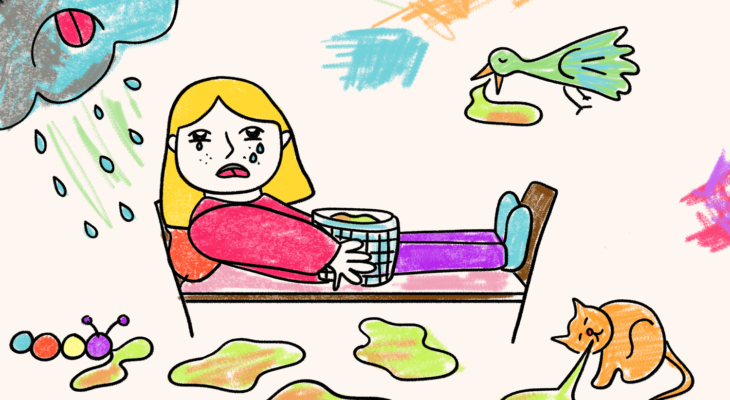Emetophobia is an intense, illogical fear of vomiting. For people with emetophobia, the act of vomiting or seeing someone else vomit can cause intense anxiety, panic attacks or avoidance behaviour. If your child has been diagnosed with emetophobia, it’s understandable to feel concerned and want to help them through it. Here is some advice on supporting a child with emetophobia.
What is Emetophobia?
Emetophobia is considered a specific phobia, which is an irrational, intense fear brought on by a specific object or situation. In the case of emetophobia, the phobic stimulus is vomiting or seeing someone else vomit. This fear often develops in childhood and can be highly debilitating if severe.
People with emetophobia go to great lengths to avoid vomiting. They may restrict their diet, avoid going out in public or seeing people who are sick. When they anticipate vomiting, they experience extreme anxiety symptoms such as panic attacks, sweating, nausea and elevated heart rate. The anxiety around vomiting is disproportionate to the actual risk, and greater than the anxiety experienced by most people.
Some common signs your child may have emetophobia include:
- Avoiding foods, drinks or activities where vomiting may occur
- Refusing to go to school or social events where sickness is going around
- Severe, debilitating anxiety around vomiting
- Rituals or safety behaviours such as frequent hand washing
- Panic attacks when feeling nauseated or when others are sick
If your child displays persistent fear or behavioural changes around vomiting, it’s a good idea to see your GP. Getting an accurate diagnosis is important so you know how to properly support your child.
Treatment for Emetophobia
There are a few different emetophobia treatment options. Here are the effective emetophobia treatment methods explained.
Cognitive Behavioural Therapy (CBT): CBT focuses on changing unhelpful thought and behaviour patterns around the fear of vomiting. It also teaches coping strategies for dealing with anxiety. CBT can be very effective for treating phobias like emetophobia.
Exposure Therapy: This involves gradually exposing your child to their fear in a controlled, safe way. For example, your therapist may first have your child look at photos of someone vomiting. Then they may watch videos, listen to sounds and eventually be exposed to real-life vomiting situations. This helps desensitise them over time.
Medication: For severe cases, anti-anxiety medication or antidepressants may be prescribed to help manage anxiety and OCD-like symptoms. Medication is often combined with therapy.
Alternative therapies like hypnotherapy, mindfulness and guided imagery may also help children relax and build confidence to manage symptoms. Don’t hesitate to explore different therapies to find what works best.
As well as seeking treatment, you can help your child through their phobia by doing the following:
Create a Supportive Home Environment
Keeping your home environment low-pressure while supporting positive change through therapy is key.
Have regular conversations where your child can discuss their fears without judgement. Ask them what situations make them most anxious and what you can do to help them face small challenges. With time and trust, open communication makes the recovery process easier.
The key is starting treatment early, finding a qualified mental health professional and having patience with the process. With compassion, time and consistent effort, it is possible for a child to overcome their phobia and minimise its impact on their life.

